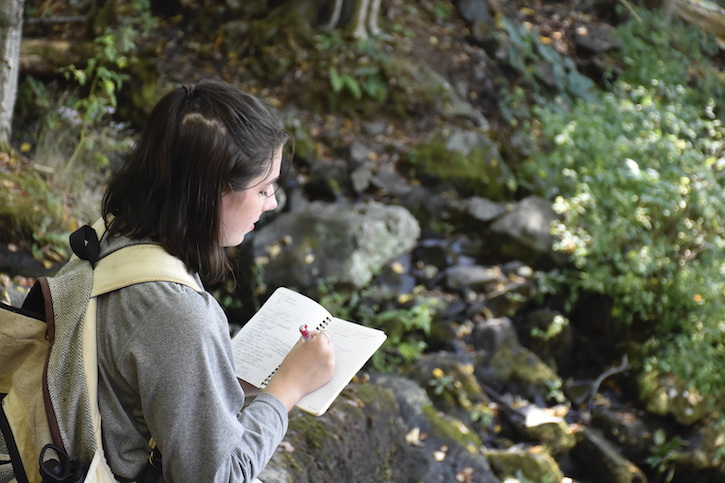Outside their dorms, students at the Smithsonian-Mason School of Conservation (SMSC) have visual access to rare and endangered species. On any given day, you can find them doing field and laboratory work with influential conservation mentors. Midway through the spring semester, the school known for its hands-on conservation training, had to quickly transition their courses online due to COVID-19.
“It was challenging,” said Anneke DeLuycker, associate professor at SMSC who is teaching and coordinating two of their digital offerings for the summer. “I knew something was going to work because at SMSC, we do everything in our power to give students the best education, time, and experience that they could have, whether in-person or virtually.”
George Mason University students in the “Research in Conservation” course work one-on-one with conservation mentors on specialized projects. Though video chat replaced face-to-face meetings and learning content, the core mission of SMSC remained.

“The goal of the research course is to give these students experience in contributing new knowledge to advance the field of conservation,” DeLuycker said.
Creative brainstorming from mentors means students can still achieve that goal online, DeLuycker said, and that’s why she’s excited for this summer.
What does a hands-on conservation course look like online?
It varies from project to project, DeLuycker said. This summer, students in the research course are able to choose from projects that include:
- Analyzing video footage of endangered species to collect behavioral data that could be used to help reintroduce the species to the wild;
- Gathering data on the impact of COVID-related travel restrictions on the movement of wildlife globally, and training computer algorithms to automatically detect wildlife in aerial and satellite images;
- Creating an illustrated guide of the distribution and history of bees in the Washington, D.C., metropolitan area, using museum records and data from the U.S. Geological Survey Native Bee Laboratory; and
- Using Google Earth Engine and Geographic Information Systems (GIS) to model animal movements which could provide forecasts of changes in biodiversity.
Darryl Carter, an environmental sustainability studies senior, took the research course last spring. Converting to online was difficult at first, he said, but it had unexpected benefits.
“It required me to find solutions to challenges in new ways,” said Carter, who studied elephant behavioral ecology with Smithsonian scientist Shifra Goldenberg. “I was still able to successfully complete my research project and even continue my research beyond the semester.”
For SMSC students who don’t work directly on research projects with mentors, such as those in the “How to Succeed in Conservation” course, they also receive unparalleled networking opportunities, Deluycker said.
This summer, students will hear from speakers such as Francine Madden, executive director of the Center for Conservation Peacebuilding; Ed Maibach, director of Mason’s Center for Climate Change Communication; and Smithsonian scientists who are engaged in current issues of wildlife trafficking, species reintroduction, and conservation of coral reefs.
“One thing I really wanted out of SMSC was to have a networking experience,” Carter said. “I was concerned that I wasn’t going to be able to have that [online], but I was still able to go to the GIS lab meetings and connect with amazing scientists.”
The experience also taught Carter that now is the time for students to make an impact.
“In a crazy and changing world, we are able to find new ways to innovate and problem solve, which is what conservation needs,” he said.
